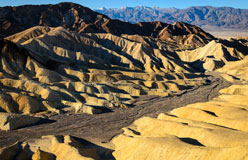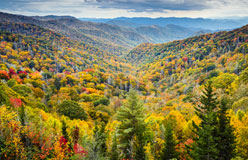For some people, admiring mountains from a distance is just fine. Others prefer to get their fill of mountain scenery up close. But for the truly fearless, the only way to really experience a mountain is by climbing it. As sports go, it’s difficult, but it keeps getting more popular.
Among the many risks climbers face are sudden storms, avalanches, freezing temperatures, deep crevasses on ice surfaces, and air that’s too thin to breathe. So why would anyone attempt something so difficult? Sir George Mallory, an early-twentieth-century climber who later died on Mount Everest, answered: “Because it’s there.”
For those who are less adventurous, there’s hiking, mountain biking, and horseback riding. Unfortunately, this up-close appreciation comes at a price. Mountains seem strong but are actually fragile. Tourists can scare away mountain animals or crowd their territories. They can trample and destroy delicate plant life. Pollution from cars and litter from visitors is growing. On the lower slopes, whole forests have been chopped down for fuel or building material, leaving the mountains in greater danger of erosion. Many wildfires in western states result from too many people building homes too close to forested mountains.
People are beginning to realize that we can’t take the beauty of Earth’s mountains for granted. To preserve these wonders for future generations, we have a lot of work to do.







